When it comes to Apple cables, connectors, and interfaces, Apple has always carved its own path. From the first Macintosh Plus to the new 24” iMac, Apple has used unique connections and has often strayed away from the conventions of the PC industry. Most times, ports and connectors found on the Mac lineup lived a long life, although there were a handful of embarrassing failures along the way. Apple connections have traditionally offered unique features that were influential to the PC industry. And while some connectors are widely missed (such as MagSafe), others were loathed (I’m looking at you, ADC). Read on to check out our comprehensive guide to Apple connections in use for the past two decades.
MacBook, MacBook Air, and MacBook Pro Chargers
USB-C Charging Macs (2015 – Current)
If your computer uses the same shape charging plug, it is OK to mix and match power chargers. You can safely use a MacBook Air charger to power up a MacBook Pro. But note that a MacBook Air charger might take quite a while to charge a MacBook Pro fully. In addition to the connection type of a charger, a charger also has a power watt rating. At this time of writing, Apple ships three different USB-C Power Adapters: 96W for the 16” MacBook Pro, 61W for the 13” MacBook Pro, and 30W for the MacBook Air. A USB-C cable is required to connect to the power adapter. If you use a 30W charger to power up the larger 16” MacBook Pro, the adapter will work, but it will take much longer. Ideally, it would be best if you matched the correct adapter to each system when possible. One of the great features of USB-C on Apple portables is that you can charge the device on any available USB-C port.
MagSafe (2006 – 2011) & MagSafe 2 (2012 – 2017)
MagSafe was a much-loved, modular power solution that detached from the computer if the cable were kicked or pulled quickly. Connecting a MagSafe charger produced a very satisfying *click* sound when connected. While this feature is dearly missed, it may have been for the best that Apple discontinued the product. The MagSafe series of adapters were prone to wear and tear damage very quickly, and the shielding surrounding the adapter was prone to stripping and fraying. In 2012 the MagSafe port was redesigned to accommodate slimmer computers, and an adapter is available to connect MagSafe devices to MagSafe 2 Power Adapters. Similar to the adapters available today, MagSafe is available in 85W, 60W, and 45W versions.
The outlet plug on all Apple laptop chargers is modular and universal, meaning you can use an extender or change the outlet entirely for use in another country.
Macintosh Connectors
Thunderbolt 3 Era Macs (2016 – Current)

Starting the list off with a bang is Thunderbolt 3.
Today, all Macs ship with Thunderbolt 3 ports for connectivity. On many models, this is the only connection type. The Thunderbolt interface is a way of carrying USB, PCI, and DisplayPort standards together in one cable. For more information on what is the difference between Thunderbolt and USB-C, check out our explainer video.
With an adapter or a dock, it’s possible to connect the Thunderbolt ports on your Mac to other devices such as a display, high-speed storage, networking, speakers, and more.
Thunderbolt 3 allowed external graphics cards, eGPUs, to become a reality. eGPUs bring the power of desktop gaming and workstation graphics cards to laptops and compact desktops alike. This allows for video editors to process effects more quickly and enables high-end gaming on the Mac. eGPUs continue to function for Intel Macs and Windows PCs but are not supported by Apple Silicon Macs.
While technically, some Macs currently ship with Thunderbolt 4 ports, on the Mac-side, Thunderbolt 4 is not different from Thunderbolt 3.
Thunderbolt 3’s greatest strength is the ability to transform a mobile system to a desktop with a single cable.
USB 3 (2012 – Current)
Good, fast, and cheap – pick three. USB 3.0 brought high transfer speeds to the masses without breaking the bank.
Keyboards, mice, and printers were largely unaffected by the introduction of USB 3, and these devices did not require the additional bandwidth. Where USB 3 became a game-changer was storage.
USB 3.0 brought fast transfer speeds to the masses. External hard drives running over USB 3 hardware had the potential to move significantly faster than they otherwise would have under USB 2. That is because USB 2 was not a particularly fast protocol, and there was potential for a bottleneck in the interface between the drive and the computer. Even FireWire 800 devices couldn’t keep up with the speeds of USB 3. USB 3.0’s 5Gbps transfer speeds were enough to nearly fully saturate an SSD SATA drive, opening new workflows and opportunities in pocket-sized packages. Copying files to and from laptops and desktops around the office or school became a lot faster.
USB 3.1 saw a doubling in speed again, to 10Gbps.
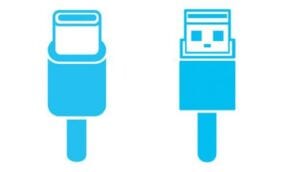
Typically, USB 3.0 connections use the USB-A connector, and USB 3.1 connections use the USB-C adapter. However, this does not mean that all USB 3.1 devices use a type-c connector. There are USB 3.1 ports that utilize a type-a connector.
USB 3.1 (over USB-C) is compatible with earlier implementations of USB. By utilizing a USB-C to USB-A adapter, it is possible to connect hard drives and keyboards to systems that use a USB 3.0 or USB 2.0 port. Displays may not work through these adapters, as they may require drivers unique to USB 3.1.
USB-C Only Macs (2015 – 2017)
There was one model of Mac that was something of an aberration. From 2015 to 2017, the MacBook, with its new, sleek design, featured a single USB-C port for connectivity at USB 3.1 speed.
This MacBook stands out from the crowd as all other Macs at the time featured Thunderbolt connectivity. However, USB-C on the 2015 MacBook is a versatile connector offering 10Gbps of connectivity bandwidth. If you are looking for peripherals or docks for a USB-C MacBook, some good options include the OWC USB-C Travel Dock E and the OWC USB-C Dock.
Thunderbolt 2 and Thunderbolt Era Macs (2011 – 2017)
Thunderbolt 1 was introduced to the world in 2011 with a new MacBook Pro and quickly followed with a new MacMini and MacPro. At the time, Thunderbolt 1 was twice as fast as the newly announced USB 3.0 standard and twenty times faster than USB 2.0.
Initially, Thunderbolt became popular in external hard drive closures, particularly multi-bay RAIDs. The extra bandwidth afforded by Thunderbolt allowed professionals such as video editors, digital imaging technicians, and sound designers to move data quickly without the need to buy expensive interfaces such as fibre-channel or SAS.
Audio professionals noticed that Thunderbolt models replaced FireWire audio interfaces. Video editors were treated to a whole new lineup of external monitoring solutions such as the BlackMagic Ultrastudio and AJA T-TAP. For the first time, laptop users were able to do everything desktop users could. For many applications, Thunderbolt was a PCI replacement.
Have a Thunderbolt or Thunderbolt 2 Mac? It’s possible to connect to Thunderbolt 3 devices by using a connector or dock. Just note that the bandwidth of the device you are connecting to will be limited to Thunderbolt or Thunderbolt 2 speeds. Connect to USB-C devices through a Thunderbolt 3 dock, over Thunderbolt and Thunderbolt 2 hosts.
Mini DisplayPort Era Macs (2008 – 2012)
Mini DisplayPort helped usher in a new era of high-resolution displays, starting with the Apple LED Cinema Display which, supported a native resolution of 2560×1440. By pushing beyond standard HD resolutions, Mini DisplayPort paved the way for higher resolution displays. Apple and macOS were the first to implement high-resolution UI scaling and paved the way for the 4.5k iMac we have today.
Mini DisplayPort replaced Mini DVI. While some computer displays shipped with an onboard Mini DisplayPort, most users needed Mini DisplayPort adapters to connect to DisplayPort, VGA, and HDMI monitors.
Mini DisplayPort was forward compatible with Thunderbolt and Thunderbolt 2 and even supported daisy-chaining Mini DisplayPort displays through Thunderbolt hubs and docks. Mini DisplayPort cables and devices work on Thunderbolt ports but, Thunderbolt devices (or cables) do not work with Mini DisplayPort ports. For this reason, Mini DisplayPort adapters were sold for some time as Thunderbolt-specific adapters were not required for displays.
Even though Apple shied away from Mini DisplayPort in favor of Thunderbolt rather quickly, the platform saw a much longer life on the Microsoft Surface lineup of computer tablets up until the year 2018. Oddly, Surface products have not seen Thunderbolt on any make or model.
Most iMacs from this era (24” and 27” models from 2009 to 2014) can operate in target display mode, which allows the iMac to be used as a second display for another Mac.
Mini DVI Era Macs (2005 – 2008)
Mini DVI brought the bandwidth of full-sized DVI and shrunk down the footprint considerably. Most Intel Core 2 Duo models of Macs shipped with a Mini DVI port, as well as the last model of the 12” Powerbook G4. Mini DVI allowed high-resolution displays to be connected sleekly to laptop systems and iMacs. While Mini DVI was short-lived, it was versatile. Macs with Mini DVI could connect to DVI, VGA, and HDMI. Connecting to televisions via S-Video was also possible at the time, but the adaptors are no longer in production.
USB 2 (2004 – 2011)
USB 2 improved on the original USB by increasing the data rate from 12 Mbps to 480Mbps, bringing the transfer speeds into the realm of FireWire 400. Apple introduced USB 2.0 alongside the 3rd generation iPod that did away with the FireWire port for connectivity and instead introduced the 30-pin iPod port. While USB 2.0 was not the fastest interface for creative professionals, it was certainly convenient, bringing with it up to a forty-fold increase in performance when transferring data compared to USB 1.
Mini VGA Era Macs (2001 – 2005)
Mini VGA Macs included the white iBook G3 and G4 laptops, the much-loved budget-friendly eMac, and some iMac models. Mini VGA connectivity did not make the leap into the Intel Mac era. Many G4 iBook models shipped with a Mini VGA to VGA adapter, and an optional Mini VGA to S-Video adapter was available.
Apple Display Connector (ADC) (2000 – 2005)
The Apple Display Connector was a proprietary version of the DVI standard. It held some advantages, such as the ability to carry USB and a display signal on a single cable. Its DVI-like design is a point of great frustration for many IT professionals. Imagine going to service a broken system or monitor only to discover that the interconnecting cable is slightly different, requiring an adapter or a different cable altogether. There was no immediate replacement for ADC on the desktop side when it was discontinued with the PowerMac G5 until Mini DisplayPort came along a few years later.
Apple Speaker Minijack (2002)
In 2001, Apple introduced an audio interface known as Apple Speaker Minijack. Its 2.5mm plug is proprietary in design (typical headphones use 3.5mm connections). Surrounding the tip was an amplification ring that would power peripherals utilizing this connection. The only device that ever officially supported this format was the Harmon Kardon designed Apple Pro Speakers. Only the iMac G4 supported the Apple speaker minijack before being discontinued.
FireWire (1999 – 2013)
When FireWire was introduced in 1999, there was nothing else like it on the market. At that time, the newly released USB standard operated at a speed of 12Mbps, whereas FireWire was an impressive 400Mbps. The first Mac to ship with a FireWire port was the Blue & White Power Macintosh G3. The story on why FireWire was never as successful as USB is something of industry gossip. The story goes that Steve Jobs wanted to charge manufacturers $1 per port to implement FireWire on a device (such as a motherboard). Intel was outraged at Apple’s proposal and instead backed the development of USB 2.0. While FireWire initially held a significant advantage over USB, the gap was closed considerably when USB 2.0 was released a few years later.
Sony helped play a role in FireWire’s success by using the technology under its i.LINK moniker, allowing users to connect camcorders directly into a computer with no additional hardware required. IBM and HP workstations also prominently featured FireWire cables under the label “IEEE 1394” as a high-speed replacement for SCSI.
One notable difference between USB and FireWire is that FireWire would transfer in a continuous bi-directional “stream” of data. Whereas USB would transfer data in short bursts known as “packets.” The result is that when using a FireWire interface, musicians would be able to perform and monitor back their performance tracking back from the Mac, with less latency than a USB device. The protocol was updated in 2003 to FireWire 800, which carried its own connector type, but was backward compatible with an adapter.
The introduction of FireWire was a crucial component in the DV Video “revolution.” Professional and amateur filmmakers alike could record video on DV cameras, transfer the footage from the camcorder to a Mac over FireWire, and perform video editing in Final Cut Pro. All three of these components were nothing short of a miracle. At the time, edit software from Avid and Media 100 would cost tens of thousands of dollars, require special hardware to “digitize” footage, and massive SCSI drives were needed to handle video and audio playback. FireWire on Macs with Final Cut Pro did away with all of that.
While FireWire stopped seeing deployment on new Macs in 2013, it was commonly used until recently as it was the fastest native interface on the much-loved 2010 MacPro “cheese-grater” tower.
Have some DV tapes that need transferring? All you need is a 6-pin to 4-pin FireWire cable to interface your camera directly with a Mac. FireWire is compatible with modern Macs with the use of a FireWire to Thunderbolt adapter.
USB 1 (1998 – 2003)
It is hard to imagine a port with more influence in the computing industry over the past 25 years than USB. Before the introduction of this humble protocol, there were multiple different standards for connecting keyboards, mice, digital cameras, drawing tablets, printers, scanners, MP3 players, flash memory cards, and more. USB streamlined the connection and interaction for all these devices. For the first time, technology was “plug-and-play” as opposed to “plug-and-pray.” With USB, connecting a camera to offload pictures just worked like magic.
In 1998 with the introduction of the iMac G3, Apple did away with all existing connectivity ports in favor of USB. Apple even did away with the floppy disk, which was still the primary way files were moved locally in offices. The iMac proved to be immensely popular, and the world adapted to a USB-only machine.
Apple Desktop Bus (1986 – 1999)
Apple Desktop Bus, or ADB, was invented by Steve Wozniak and was the standard connector type for keyboards and mice on Apple hardware for over a decade. I say “Apple” because the protocol was introduced on the Apple II series and quickly arrived on the Macintosh soon afterward. ADB was comparable to PS/2 on the IBM PC side. A unique feature allowed for daisy-chaining, meaning you could use a keyboard as a hub for a mouse. Oddly, the connection was not hot-swappable, and disconnecting a keyboard and mouse while the system was turned on could result in a damaged motherboard.
USB replaced ADB, and for a good reason. Companies like Wacom produced both Mac and PC versions of their tablets which were inherently incompatible with each other, raising costs. USB did away with all this by offering a universal standard that replaced ADB on the Mac and PS/2 on the PC. During the USB transition in the late 1990s, ADB-to-USB adapters were commonly sold for those who loved their keyboards and wanted to bring them along into the iMac era. Today these adapters are difficult to find and often fetch a higher price than an ADB keyboard.
If you feel nostalgic for an Apple mechanical “clicky” keyboard, you might be interested in the Matias Tactile Pro. It is directly modeled after the feel of the Apple Extended Keyboard from the mid-1980s. And while it may not be as quite authentic as actually using a piece of 40-year-old hardware, it might just feel the part.
Thanks to the proliferation of USB devices and the openness of the standard, many devices like keyboards and mice will work today just as well as they did in 1999. And even though FireWire has been out of production for many years, even Apple still produces and supports FireWire to Thunderbolt adapters. Some devices with specialized drivers, such as printers, will be lost in the shuffle of OS upgrades and discontinued drivers regardless of the interface they used. Overall, though, the computing industry is moving towards a more consistent future, and products see longer life cycles.
Do you have a favorite ADB keyboard or trackball? Lugging around a DVI Wacom Cintiq? Still rocking an iPod with an onboard FireWire port? Let me know in the comments section. I’d love to hear about it!

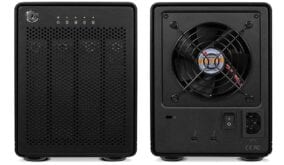
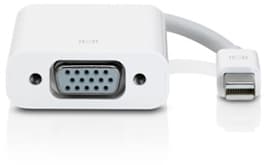

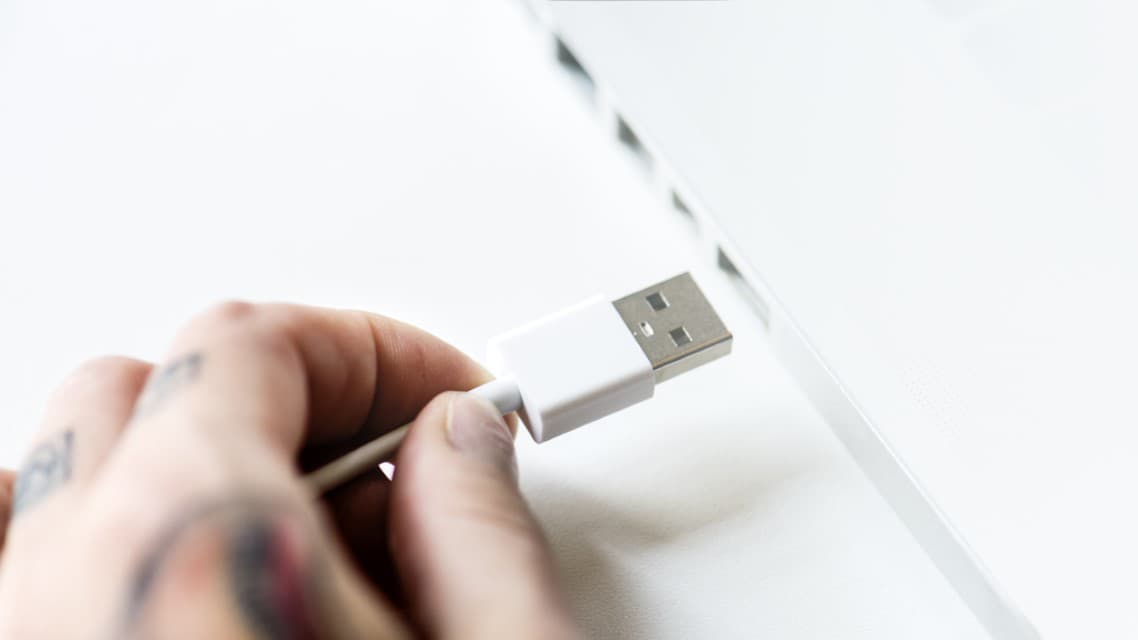
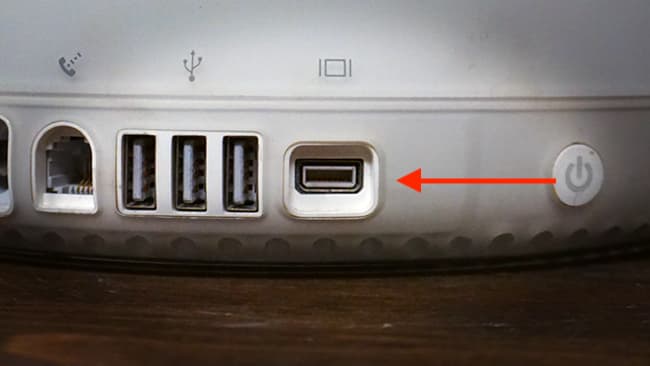
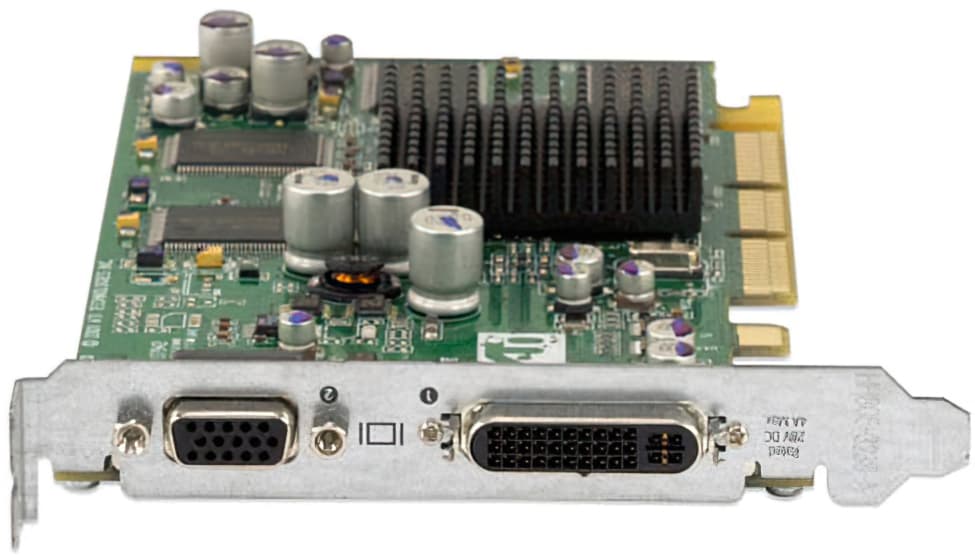
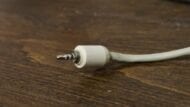
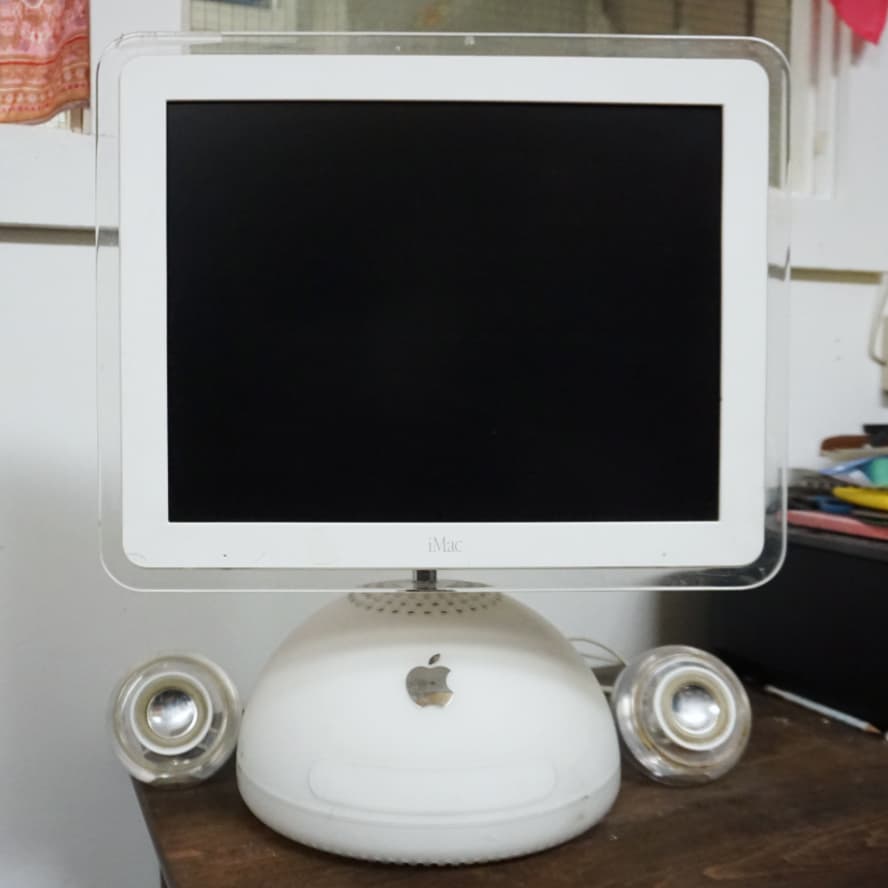

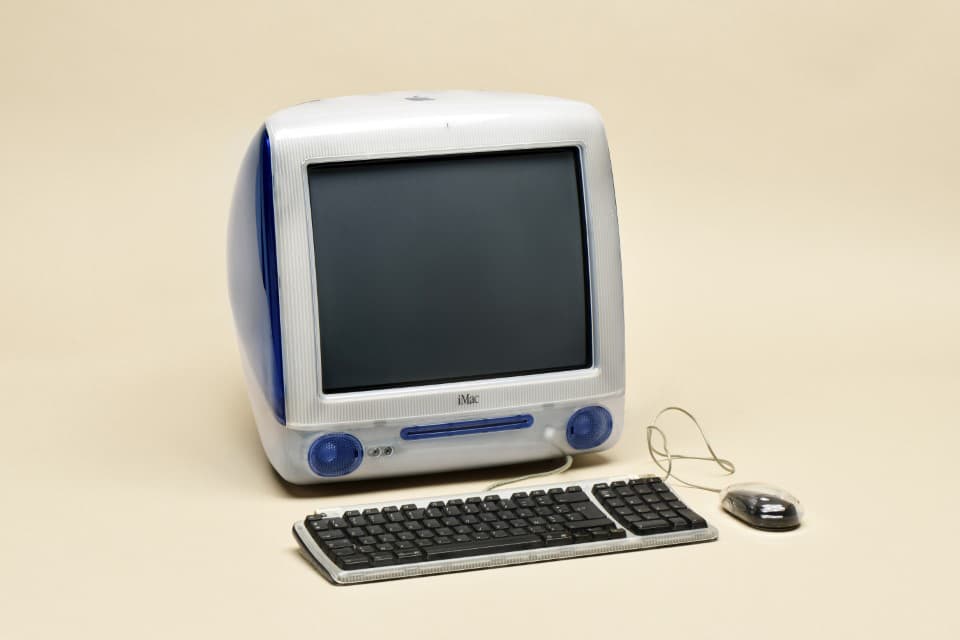
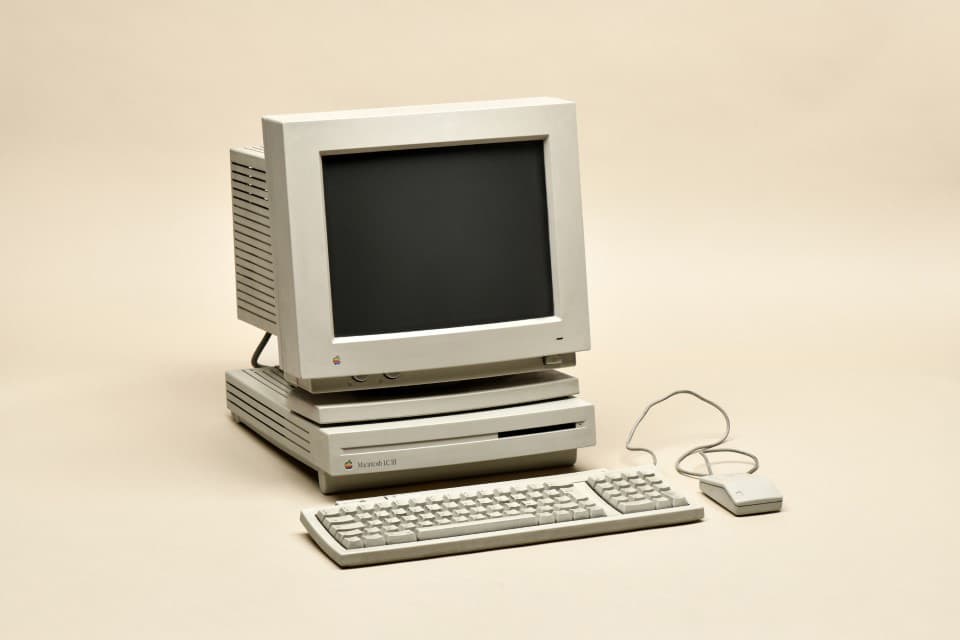
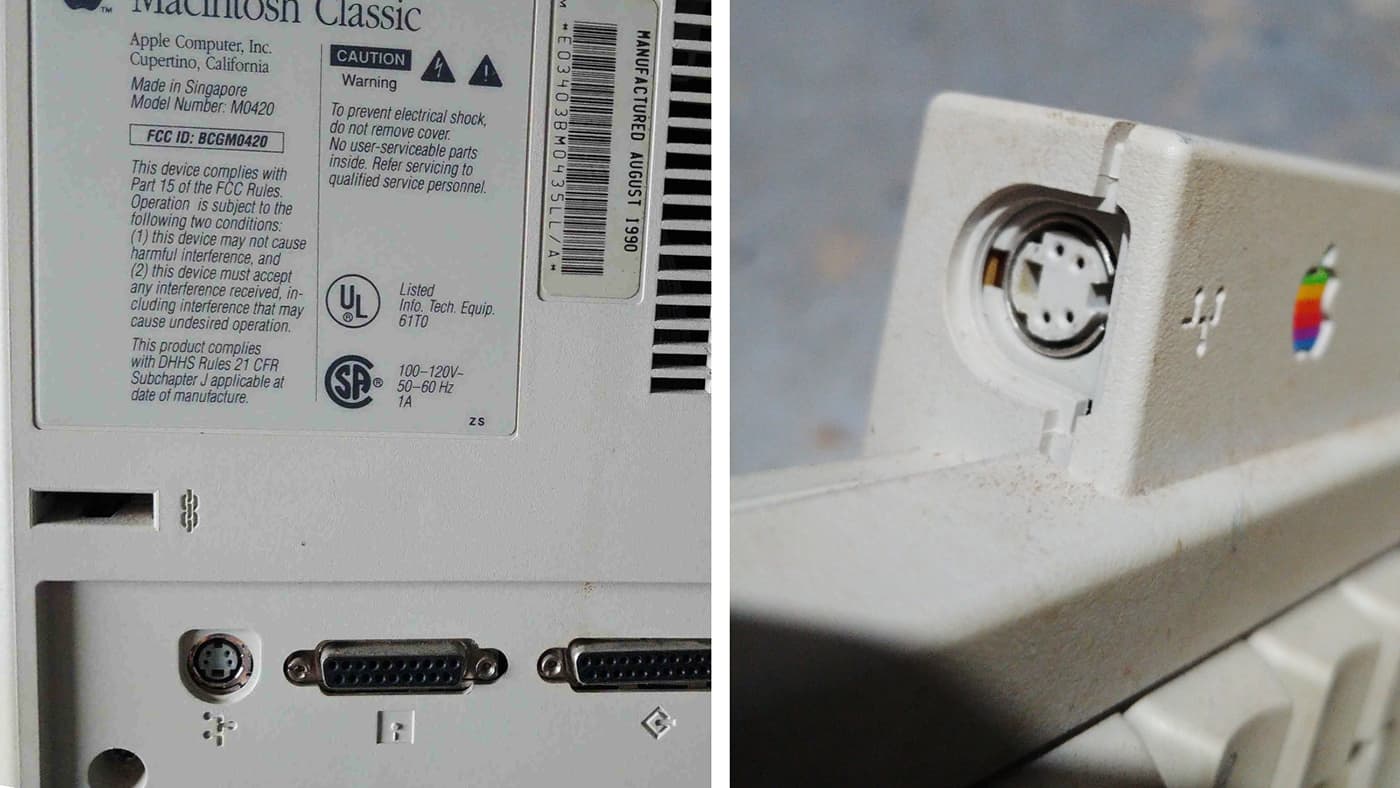



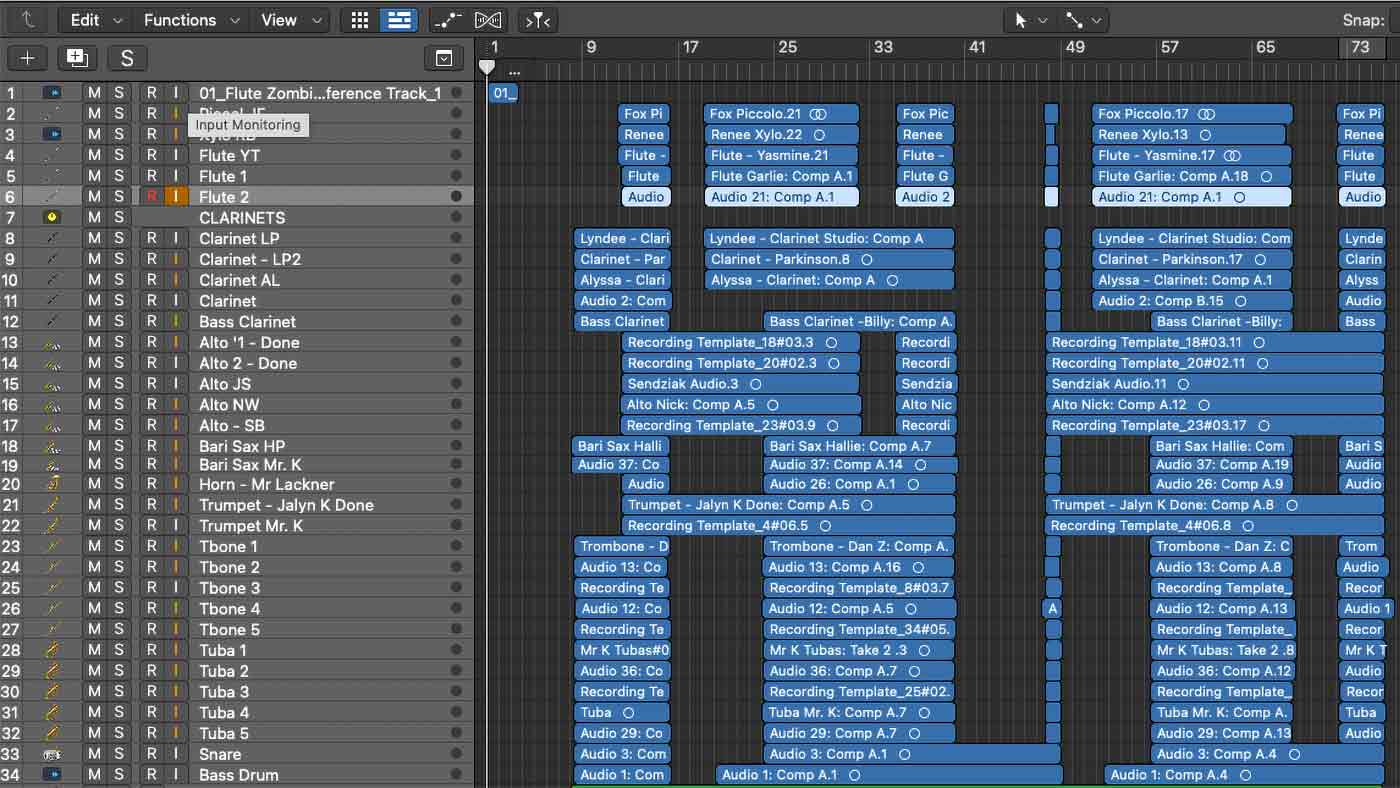
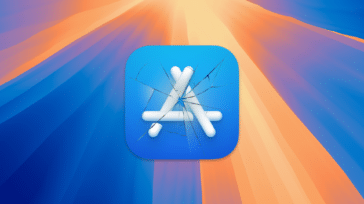
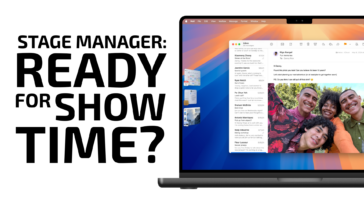

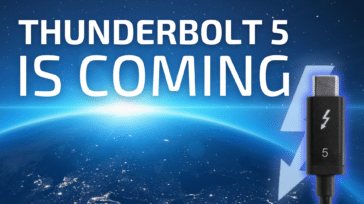


+1 for the SCSI talk, was secretly hoping for some Iomega Zip drive talk, had fistfuls of them back in 1995 and thought I was elite.
Great article Arthur, high levels of enjoyment derived from talking cables and ports.
Did apple never use RS-232 serial interfaces? It was such fun making null modem cables for various combinations of DTE and DCE. This involved figuring out which handshake wires each piece of hardware and software was using.
I have seen USB to RS-232 adapters for industrial settings such as connecting barcode scanners. And, apparently there is a Lightning to RS-232 adapter out in the wild for developers.
I am uncertain if Apple ever shipped RS-232 onboard a Mac during the “beige” era. I intentionally drew the line at ADB because the article just kept getting longer and longer and the Powermac G3 had both ADB and USB onboard serving as a transition between eras. But, a second entry covering the 90s lineup of hardware would be a great deal of fun to do!
note that connecting a Sony camcorder to a newer Mac will also require a Firewire 400 to 800 adapter in addition to the two items with links in the article.
good point Geoffrey.
you’d have to do FW400 6pin > FW400 4pin > FW800 > Thunderbolt
Thanks Arthur, for the very nostalgic review! Those of us who have used Macs for a long time probably have quite an eclectic collection of cables boxed away. I think the most exotic one I still have is an adapter from the proprietary HDI-30 SCSI connector on a WallStreet PowerBook to a standard 50-pin centronics.
I was so happy when Apple went to USB because I could finally buy a decent 2-button mouse! Just in time, too, because my 1999 blue and white G3 came with the much-maligned “hockey puck” mouse (which I still have). I also had to buy a USB-to-serial adapter so I could still use my external 56K modem.
Nice!,
I remember the Wallstreet G3 got a lot of love in its day. It looked sharp in black, albeit with the Apple logo pointed the wrong direction on the back!
I never cared for the hockey puck mouse but the keyboard from the OG iMac was pretty nice, it was a compact size but felt decent to type on.
A trip down memory lane…
I still have a box of ALL of these cables. My favorites are the SCSI ones, they take up so much space. I have another box of adapters to fit the older ones to the newer ones. Then another box to fit adapters to other adapters.
Cheers Mike!,
I think the only SCSI cable I ever owned was for an Atari ST external hard drive, but I did away with it. I didn’t ever setup any Macs or PCs with SCSI in the 90s, I think a lot of Engineers were happy to replace SCSI with Firewire for ease of use!
Being in the design and publishing business, and moving big files, I also have another box of disk drives and portable media that I’ve used over the years. That’s worth another article.
I’m casually hunting for a G3 or G4 Powermac to dual boot between Classic and OS X. I’m seeing lots of postings for Macs with SCSI cards and Zip drives.
The Beige Macs are a bit of a different story though with DB15 displays and special ports for everything. I restored a Performa about 10 years ago but didn’t bother to lug it around with me.
I just got my hands on a Bondi Blue G3 but that little guy doesn’t even have Firewire! The projects are a bit limited with that system.
How well I remember !!!! I worked in education (cross-platform), and how many times have I joked about and cursed The Apple Macintosh Department of Bizarre and Unknown cables/connectors.
Not only that, how much $$$$ have I spent at OWC every time I bought a new dongles, hubs, or even a new computer – JUST FOR THE CABLES !!!! I firmly believe that the best way to insure the growth of my IRA’s is to invest in the folks who make and/or sell the cables.
yes, having worked at a company that rented edit suites there was the giant box of mystery adapters, I can relate :)
Great article! However, I have one critique. The iMac G4 is not the only Mac to support the Apple Speaker Minijack. The PowerMac G4 Digital Audio had this port as well and did come with the Apple Pro Speakers. I still have my G4 tower, I’ve since replaced the Logic Board, power supply, upgraded the processor, and added an audio card. I do agree that this proprietary jack was a nuisance if you didn’t want to use the Apple Pro Speakers.
Cheers Tim,
I didn’t know that and I had that Powermac! Good to know. Was the port dropped by the time the Quicksilver model came out?
I believe the G4 Cube had similar speakers but didn’t run over Apple Minijack.
According to the Mactracker app, it appears that all the G4 towers after the DA all had the 2.5 mm minijack. (Digital Audio to Mirror Drive Door)
I still have my G4 Digital Audio. I believe it’s still in working order too, although I haven’t powered it on in a long time. I still need to power it on to see what I have on it.
Article is dated July 2021…. No mention of USB4?!
That is after all the term Apple is using in their specs for this year’s new Macs.
Hello! dduff617,
Fair criticism. Rocket Yard recently ran quite of few posts about USB 4 specifically that I didn’t want to spend much time on the subject. Check out this post:
https://eshop.macsales.com/blog/67796-thunderbolt-usb4-vs-thunderbolt-4/
Great article; walk down memory lane!! And current and great help…
Hi Arthur,
What a wonderful repository of information!
How would you recommend connecting a 30″ Apple Cinema Display in good condition to a 2018 Mac Mini via the TB3 or USB-C ports?
With my best regards and many thanks for your previous advice.
I’m still getting several flickers as I wake up that Dell 2713H display connected to my 2018 Mac Mini but it’s generally better with the TB3 to Display Port cable coming from the Mini instead of via the BenQ TB3 port, so am living with that!
Hi John!,
I think the culprit is the dual-link DVI output from the 30″ Cinema Display.
I found a forum where some users are discussing connecting this monitor to modern Macs and some are having success. It looks like it can be done by going dual-link dvi > mini displayport adapter, then mini displayport > usb-c. But, I haven’t been able to test it out myself.
source: https://apple.stackexchange.com/questions/243920/connect-new-macbook-usb-c-to-apple-cinema-display-30-dual-link-dvi